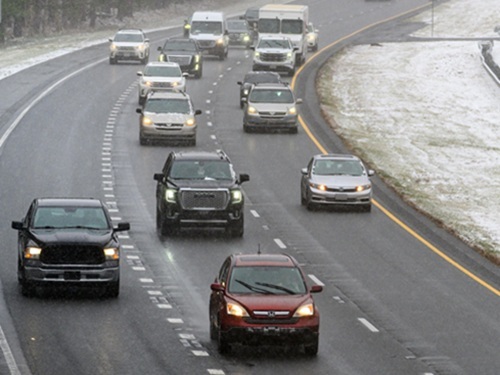Four teams of university faculty and students have been selected by NASA to help solve key challenges facing the future of air travel as part of the agency’s University Leadership Initiative.
[Above photo by Joel Kowsky for NASA]
NASA said this initiative gives the academic community an opportunity to support its aeronautical research goals, while also providing students experience in cracking real-world technical challenges, noted Bob Pearce – associate administrator for the Aeronautics Research Mission Directorate at NASA headquarters in Washington, D.C. – in a statement.

“The University Leadership Initiative is an integral part of our research portfolio,” he explained. “The multidisciplinary teams are directly contributing to our priorities and even leading the exploration of solutions beyond our current portfolio.”
Three of the four teams will address topics related to ensuring the safe growth of Advanced Air Mobility or AAM, while the fourth will examine an option for generating electricity to propel a future airliner.
As the teams work on their projects, they will work with other universities and industry partners – creating opportunities for participation that include students with diverse experiences, backgrounds, and talents.
“This multidisciplinary approach enables the lead teams to partner with others, including student populations who are underrepresented or have not been involved before in aviation research,” said Koushik Datta, the initiative’s project manager for NASA.
“As we look to future growth in AAM and an increasing emphasis on creating truly sustainable aviation, it’s important we involve today’s students in helping us solve tomorrow’s challenges,” Datta noted.
NASA noted the four schools it selected and their areas of focus are:
- New Mexico State University will gather data about current and projected AAM operations to help produce models that could inform decisions on how the electric grid infrastructure can support future AAM activity, including the demand for aircraft charging stations.
- Boston University will focus on developing models for predicting how to minimize noise from AAM vehicles flying within dense urban environments where wind conditions can rapidly change. These models also might provide guidance on suitable locations for vertiports that minimize noise during takeoff and landing.
- University of Notre Dame intends to develop an automated decision-making capability that ensures small drones are safe before they fly using a NASA-developed drone traffic management system. This automated system would replace a manually intensive process that is limited in its ability to handle increasing drone traffic.
- Tennessee Technological University aims to develop a preliminary design for an electrified 150-passenger aircraft that uses an ammonia-based integrated propulsion, power, and thermal management system.
NASA noted that this is the sixth round of awards for its University Leadership Initiative. Selections of four teams and six teams were made in 2021, with five teams chosen in 2020, three teams tapped in in 2019, and five teams selected for the initiative’s inaugural effort in 2017.
 Nation
Nation
Registration Open for AASHTO’s Winter Rail Meeting
December 19, 2025 Nation
Nation

